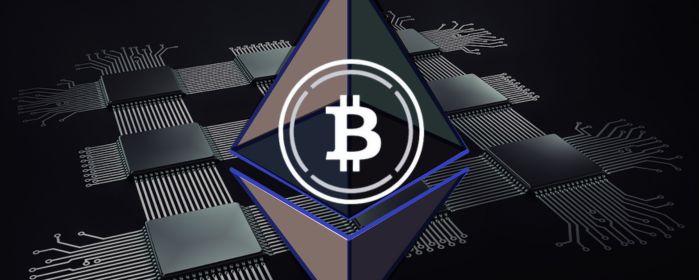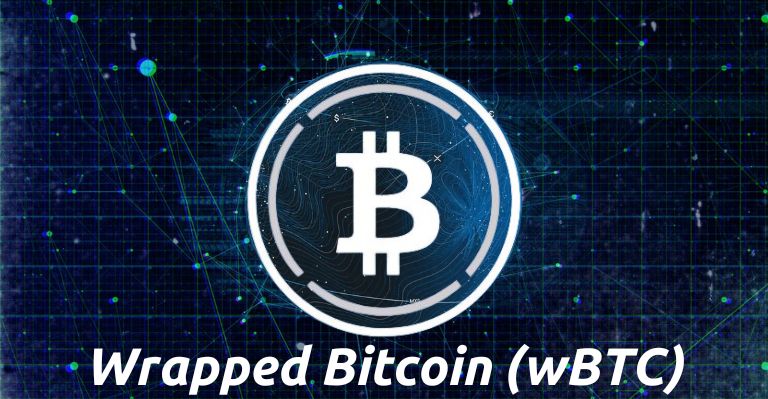To use Bitcoin within the Ethereum DeFi ecosystem, it is necessary to create an ERC-20 token that represents it. This is Wrapped Bitcoin, which intends to introduce the value and liquidity of Bitcoin to the vibrant and quickly developing world of DeFi to combine the best aspects of both worlds.
Bitcoin is an innovative payment network and a new class of money that is based on peer-to-peer technology. Since its inception over a decade ago, the technology behind the revolutionary “peer-to-peer electronic cash system” has remained largely the same.
But Bitcoin is not the only thing that exists in the world of cryptocurrencies. On smart contract blockchains like Ethereum, developers have built a booming decentralized finance (DeFi) ecosystem.
What is Wrapped Bitcoin (WBTC)?
It is an ERC-20 token that “acts” as Bitcoin on the Ethereum blockchain. It is backed by Bitcoin on a 1:1 ratio, meaning that for every WBTC in circulation, there is one BTC locked in a custodial account by a trusted entity called BitGo. WBTC can be minted or burned by users who deposit or withdraw BTC through a network of merchants and custodians.

What is Special About WBTC?
Collateral is a key component of many DeFi dapps on Ethereum. These dapps allow users to access financial services without intermediaries by using smart contracts. Users can lend, borrow, trade, or earn interest on their crypto assets by locking them up as collateral.
However, Ethereum’s market capitalization is much smaller than Bitcoin’s, which limits the amount of liquidity and collateral available for these dapps. WBTC allows Bitcoin holders to use their assets as collateral on DeFi dapps, while still retaining exposure to Bitcoin’s price movements. This way, DeFi dapps can tap into the largest and most liquid crypto asset in the world and offer more opportunities for their users.
What is the difference between Bitcoin and Wrapped Bitcoin?
WBTC has a downside: it needs trust between people. Unlike BTC, WBTC does not have the same level of security or decentralization as the original, because it relies on people and organizations to run the system instead of just code.
WBTC is a transparent and trustworthy way of bringing Bitcoin to Ethereum. It allows users to verify every step of the process on both chains. On the Bitcoin chain, users can see how many BTC were sent to the WBTC address. On the Ethereum chain, users can see how many WBTC tokens were created in exchange. The same applies when users want to redeem their WBTC for BTC by burning them. Both chains show the corresponding transactions and amounts.

Why use WBTC?
The main reason to use WBTC is to access the vast array of DeFi applications that are built on Ethereum, such as lending platforms, decentralized exchanges, yield farming protocols, and more. By wrapping Bitcoin into an ERC-20 token, WBTC users can enjoy the benefits of both Bitcoin and Ethereum: the security and scarcity of Bitcoin, and the programmability and interoperability of Ethereum.
Some of the benefits of using WBTC are:
- Liquidity: WBTC brings more liquidity to the DeFi ecosystem by allowing Bitcoin holders to participate in various markets and earn interest on their BTC.
- Transparency: WBTC is fully auditable and verifiable on the Ethereum blockchain. Anyone can check the amount of WBTC in circulation and the amount of BTC backing it at any time.
- Compatibility: WBTC is compatible with any ERC-20 compatible wallet or smart contract. This means that WBTC users can easily transfer, store, and interact with their tokens on Ethereum.
- Innovation: WBTC enables new use cases and possibilities for Bitcoin that are not possible on its native blockchain. For example, WBTC can be used as collateral for stablecoins, synthetic assets, or derivatives.
What are the drawbacks of WBTC?
While WBTC has many advantages, it also comes with some trade-offs and risks that users should be aware of. Some of the drawbacks of using WBTC are:
- Centralization: WBTC relies on a centralized network of merchants and custodians to mint and burn tokens. This introduces a single point of failure and a potential attack vector for hackers or regulators. Users have to trust that BitGo and its partners will securely store their BTC and honor their requests to redeem their WBTC.
- Fees: WBTC users have to pay fees to mint and burn tokens, as well as gas fees to use them on Ethereum. These fees can add up and reduce the profitability of using WBTC.
- Volatility: WBTC tracks the price of Bitcoin, which means that it is subject to the same volatility and market fluctuations as BTC. Users who hold WBTC may experience significant price swings and risk losing value in their tokens.

How to get WBTC?
There are two main ways to get WBTC: minting or buying.
Minting: To mint WBTC, users have to deposit BTC with a merchant who will then send them an equivalent amount of WBTC. The merchant will also charge a fee for this service. The process may take some time and require KYC verification depending on the merchant.
Buying: To buy WBTC, users can simply go to a decentralized exchange (DEX) or a centralized exchange (CEX) that supports WBTC trading. Users can swap their ETH or other ERC-20 tokens for WBTC at market rates. The process is usually faster and easier than minting.
Conclusion
Wrapped Bitcoin is a novel solution that bridges the gap between Bitcoin and Ethereum. It allows Bitcoin holders to access the DeFi ecosystem on Ethereum without sacrificing their exposure to BTC. However, it also involves some trade-offs and risks that users should consider before using it. As always, do your own research and exercise caution when dealing with any cryptocurrency.

